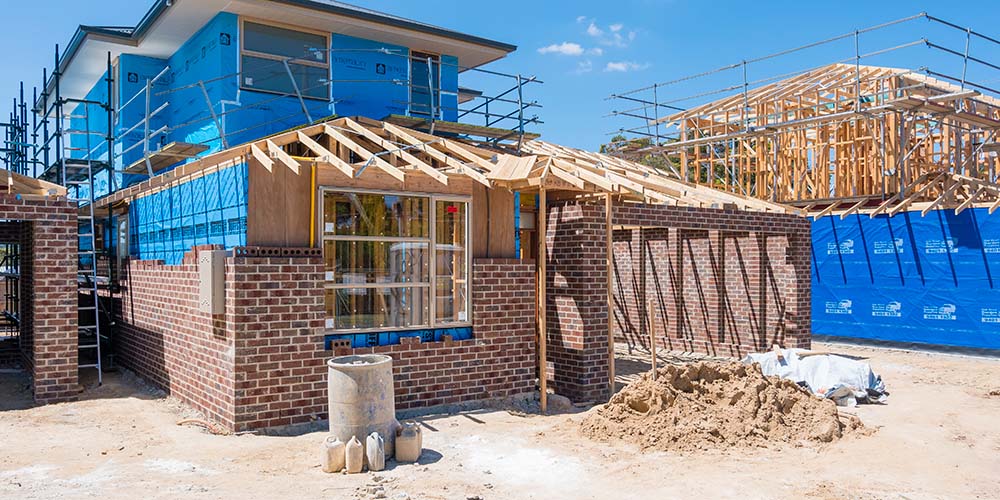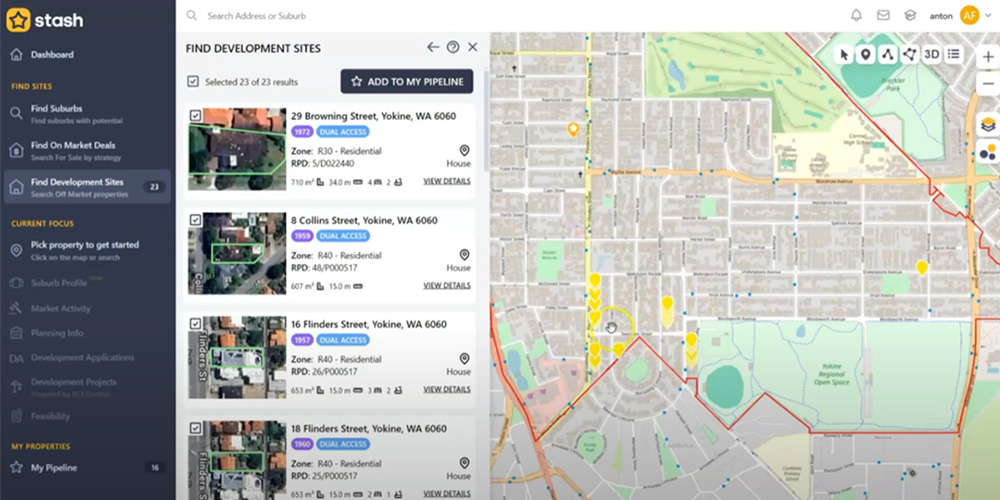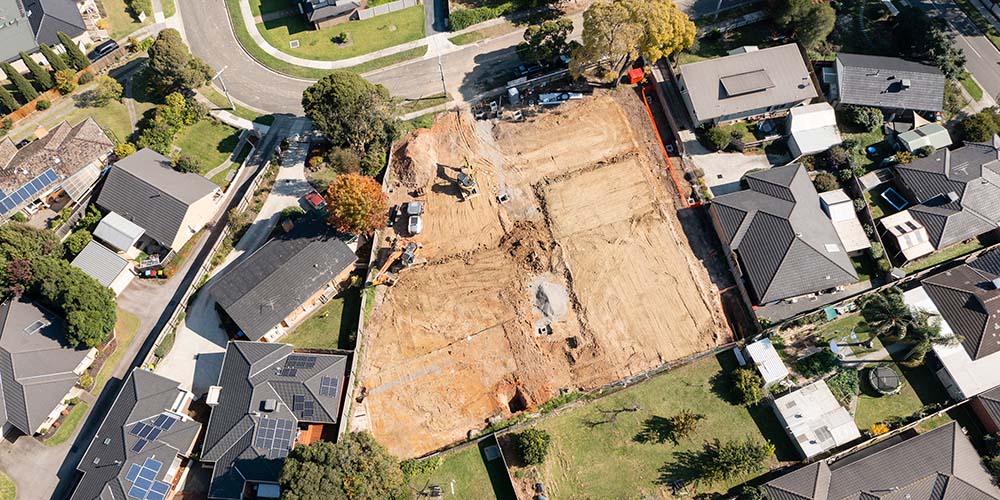
Where we are now , what the real facts are, and what we believe is coming next.
As we near the middle of 2023, I have taken time to prepare an article to objectively assess where the property development climate is at in Western Australia. I have also taken some time to consider the greater Australian housing market, and Macro-global climate, to see how these drivers will impact our local market. Assessment of these facts is provided in summary below. These findings drive the educated position that Subdivision experts is taking for the immediate future. From the perspective of project delivery in the infill property development space in Perth, we are currently just passing the through the darkest part of the night, and see a bright future ahead.
Right now, building costs are up 30-50% on 24 months ago. Interest rates that started at 2’s and 3’s now into 6’s and 7’s, with commercial funding easily in double digit territory. The power of compound interest at higher rates further erodes the project bottom line, as project delivery timeframes double in this period (and you’d be lucky if they have only doubled). Finding margin, and hope, has been difficult in this climate. The industry has taken a beating, but we are starting to see green shoots, and reasons to take stronger positions on what life will be like 6-12 months from now. Some light, at long last, is is in sight.
We are taking a view that by the end of 2023, build pricing will have stabilised if not come back slightly (3-5%), based on more competitive contract labour rates in the residential building space. Values will have moved modestly (2-3%), ready for a significant upswing into 2024 in WA (5-10%). This will be driven by continued undersupply, low dwelling commencements, the expiry of the building bonus grant workload blockage from the bowels of the construction industry, as well as a sustained and substantial increase in overseas and interstate migration. Coupled with the opportunities provided in state level planning reform (Medium Density), the scene is set to come out of the tunnel by years end in a healthier and stronger “deal formation climate”. Lets look at the facts that underpin our position:
1. Supply and demand
Due to the appalling delivery climate in the construction industry, January 2023 dwelling commencements were at an all time low: just over 700. This is barely 25% of the volume in march 2021, around 2650.
Nothing has stacked up from the developer’s side in a long time, so projects have been mothballed, and DA’s put on hold. Mum and dad consumers of house and land packages are terrified to build anything, validly fearful of stories of end-to-end delay, poor quality and builder insolvency. The fight for established dwelling product has never been fiercer. The end result? Whether you are a developer or homeowner, consumer confidence has never been lower. There have been low, or no dwelling commencements at all, in some product categories (like apartments). By years end, we will have a clearer picture of which builders will be bust and who is still around. The ones that weather the storm will be organised, seasoned and will have strong relationships with their trade base. These are the sorts of builders you want to deal with.
We will also have somewhere between a 25 and 30% of the dwelling commencements we have now. Supply and demand works both ways: we should expect a modest retraction in labour rates across the board. This is already occurring in bricklaying. Rates over $3 a brick are long gone, with rates under $2.50 being secured now. Stability, and contraction in the labour market rates will also restore some confidence to the builders, who are currently very nervously issuing fixed price contracts with enormous built in contingencies for price escalation, and until now you wouldn’t have cause to blame them. If you price a job today, and again at the end of the year, we would expect to see a not insignificant difference in the price as downward pressure on labour rates really bites.
2. Dwelling commencements
Simply put- we are still at record low dwelling commencements, and in the grips of one of the fastest and fiercest rental crisis in Australia’s history. There is still not enough supply, and we don’t see healthy supply getting online at an effective rate for at least another 18 months. This means demand is increasing at a stable rate, and supply still isn’t keeping up. values can only rise. The fact is that its still unviable to build anything right now. Land is still too dear, values haven’t risen enough, and the building industry is just starting to stabilise. As long as we have a lag in dwelling comments (and hence supply) we will see continued value rises in the WA market for some time to go, because there is a gap between supply and demand that will take years to close. Westpac has already tipped a 5% rise in values in Perth for 2024, with other large analyst bodies likely to follow suit.
3. Market segments
If we look at long term Data, Australian markets in all regional centres ( Perth, Sydney, Melbourne, Brisbane, Adelaide, Hobart) are cyclical. The value of these markets generally rises and falls, following a pattern ( unless the government augments or interferes with things like housing grants and stimulus, or higher migration). The pattern is 7-10 years of growth, and then 7 to 10 years of decline, the latter commencing when affordability for the general populace moves past crisis point. Crisis point, or market failure, traditionally commences when consumers start to spend 60% or more of their disposable income on the mortgage. There is no wiggle room, household savings are swallowed up, and its impossible for the consumer to absorb even one more rate rise. Sydney and Melbourne are there now (Sydney was there in 2019 actually). In WA its just under 40%, so we have a lot of wiggle room.
Whether Sydney and Melbourne can sustain growth after a 9-12 month “correction” is yet to be seen. Historically (and organically), these markets are due for a correction , and were in fact headed that way in 2020 until the government gave the market a steroid jab in the arm by way of building bonus grants and loan guarantees for first homeowners under the Morrison government. The current lever to sustain “growth” seems to be opening up huge number of overseas migrants to prop up demand. Whether anyone other than a wealthy migrant can afford Sydney in 5 years is yet to be seen and an entirely different conversation. For the purposes of this discussion, understand that eastern states affordability is appalling, and is driving people West.
4. The Mortgage cliff
The year 2023 is the year that it is estimated some 800,000 odd mortgages, underwritten in the cheap credit binge of a few years ago, will move off fixed 2-3% interest onto variable 6’s and 7’s. The fact is, 6% or 7% interest is historically quite reasonable, and normal. The issue for most consumers is not the rates: it’s the size of the principle debt they are servicing. The million dollar entry home-ownership mortgage in Sydney and Melbourne is standard. Median house principle on an 80/20 LVR in Sydney is in the territory of 800-900k, in WA that’s 400-450k.
Add to the rate shift the compounding effects of dwindling household savings,and wage growth that is lagging behind interest rate rises and CPI for goods and services, its clear that the fallout of the “mortgage cliff” may bring serious accommodation and affordability issues to the fore in the eastern states by the end of this year. There will be no shortage of individuals on good wages, who simply cant afford to pay their mortgage and current cost of living any more. They will be casualties of the mortgage cliff, and be driven as “economic refugees” to WA or SA for reprieve. This year, a large number of eastern states households will have to face the reality of having to move to a state with a median house price 50% of their home state, but that they can actually afford. This will put more upward pressure on the WA housing market.
5. Migration
We are on track to have just under 300 000 migrants enter Australia from overseas by the end of 2023, 25% higher than initial treasury forecasts. West Australia has also received almost 11000 interstate migrants (domestic) in the first 4 months of 2023. God knows where they are living. With around 6500 listings total on the REIWA website showing serious undersupply and low new dwelling commencements, it doesn’t take a genius to work out the likely direction that both rents, and values, are going to head. They are rising now, and only just getting started
The above analysis drives our position that WA will have another 3-5 years of strong growth from the end of 2024, with stability in the domestic construction industry coming by the end of the year. We are positioning ourselves to prepare ot take advantage of this now. The “new normal” of higher interest rates, stabilised labour markets and cost parameters, and medium density planning reform will underwrite a more certain operating landscape by the end of the year. This will give us a clearer picture of what projects we can deliver, who can deliver them and and at what cost. For now we have come up with some development strategies that conservatively work on paper, and are actively pursuing acquisitions for medium density infill sites upon which to execute these. This means getting DA’s underway for new dwelling typologies and alternate yield scenarios, pursing development potential that others don’t see. The margins are lean on paper now, but a reprice at the end of year ( with a DA in hand ) will provide numbers for consideration in an entirely different cost and end value environment. And we will be ready to go.
If you’d like to discuss working with us to prepare for, acquire and execute a successful development, please get in touch with us to enquire about an initial consult.




